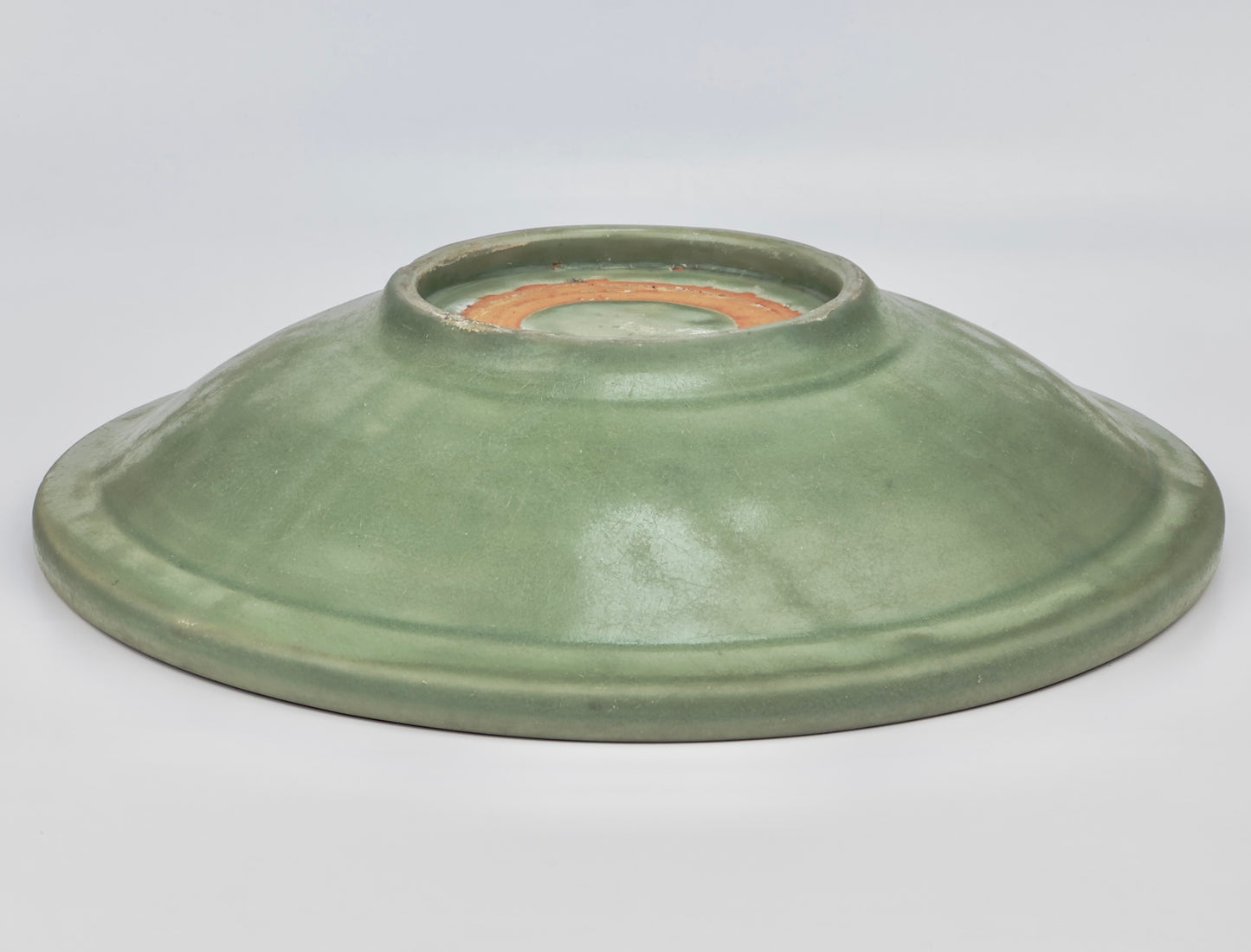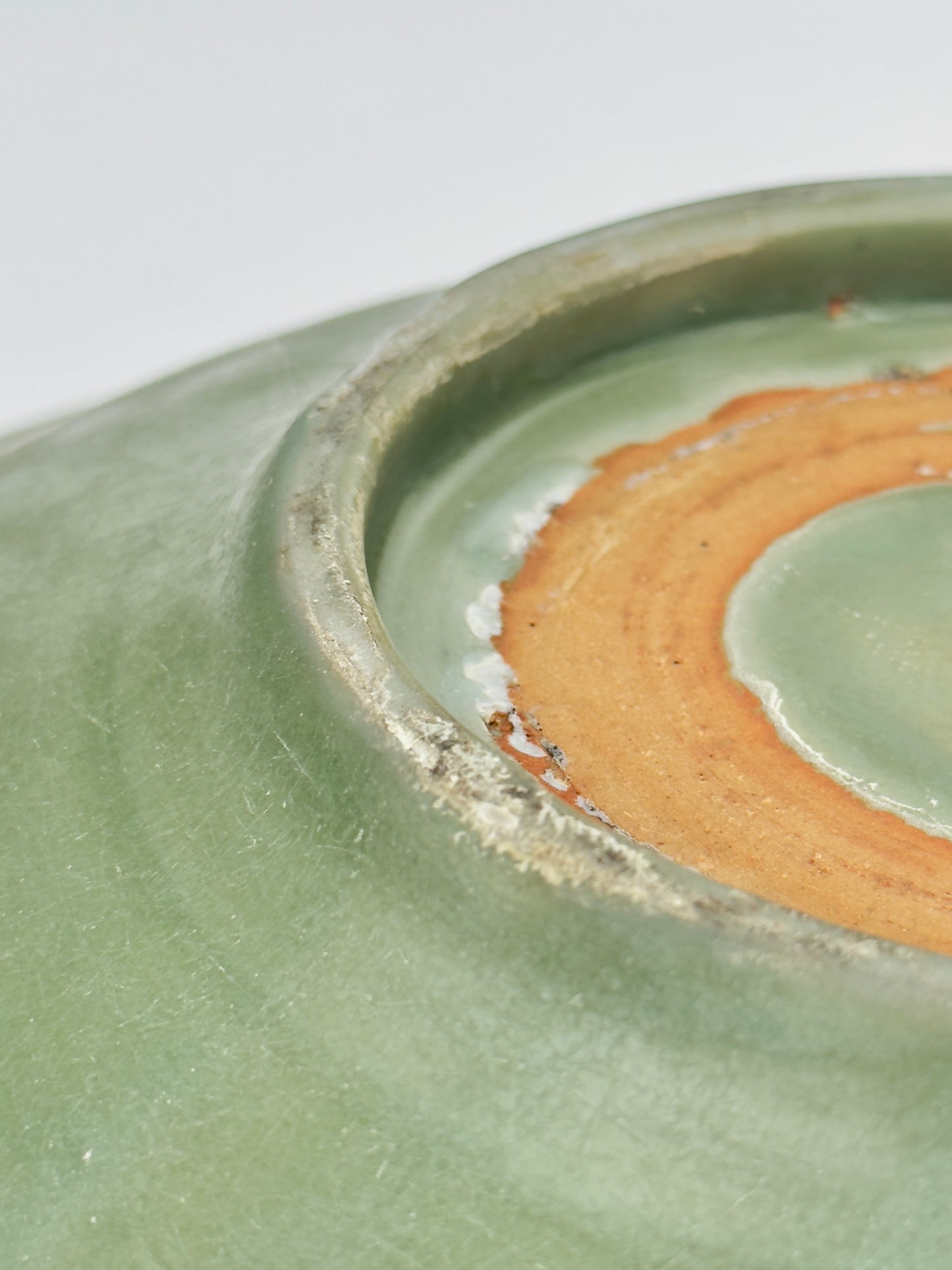Large 'Longquan' Celadon Dish, Ming Dynasty, 15th century
Large 'Longquan' Celadon Dish, Ming Dynasty, 15th century
Couldn't load pickup availability
The heavily potted dish is molded in the central roundel below the fluted cavetto and the everted rim with lipped edge, and is covered overall with a glaze of sea-green color, except for the unglazed ring on the base. The wood stand is not included with the item.
Period: Ming Dynasty (1368~1644)
Region: Longquan, China
Medium: Celadon
Type: Dish
Condition : Good
Size : 34 cm(Diameter) , 7.3cm(Height)
Provenance : Acquired in late 1990s from Hongkong
Reference :
1) Christies NEW YORK 22–23 MAR 2018 - Fine Chinese Ceramics and Works of Art - Lot 722
(Price realised : 12,500 USD / Type : Closely related)
https://www.christies.com/en/lot/lot-6129875
2) Sotheby's Paris 11 December 2020 - Arts d'Asie - Lot 8
(Price realised : 4,032 EUR / Type : Closely related)
https://www.sothebys.com/en/buy/auction/2020/arts-dasie-2/plat-en-gres-celadon-longquan-dynastie-ming-xve
3) Christies LONDON 21–28 MAY 2020 - The Art of China - Lot 31
(Price realised : 5,250 GBP / Type : Closely related)
https://onlineonly.christies.com/s/art-china/large-longquan-celadon-barbed-rim-dish-31/85369
* Ming Dynasty Longquan Celadon
Longquan celadon from the Ming Dynasty typically exhibits a more robust and heavier stoneware body compared to its Song Dynasty predecessors. The Ming era saw an evolution in celadon glaze, achieving a wider spectrum of green hues, from olive to bluish-greens. Ming celadons often had thicker glaze applications, sometimes featuring multiple layers and even multiple firings to attain depth and richness in the glaze.
In contrast, Song Dynasty Longquan celadons are known for their more refined and thinner bodies, with a glaze palette that tends toward more subtle and more uniform green shades. The shapes of Song celadons were usually simpler, emphasizing the glaze's quality and texture.
During the Song period, there was also a greater emphasis on subtle and elegant forms, with less ornate decoration compared to the Ming pieces, which showcased more elaborate decorative motifs, including incised or moulded patterns. Song Dynasty Longquan wares were also highly prized for their thin walls and lightness, reflecting a high level of technical mastery in pottery-making.
Overall, while both dynasties produced celadons of exceptional quality, the Ming Longquan celadons are distinguished by their bolder forms and more varied glaze effects, while the Song Dynasty celadons are celebrated for their simplicity and the pure beauty of their glazes.




























